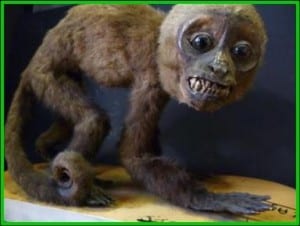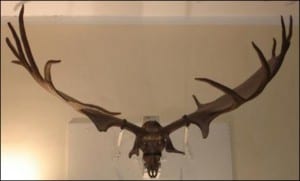Specimen of the Week: Week Eight
By Emma-Louise Nicholls, on 5 December 2011
 The most frequently heard sentence at the Grant Museum of Zoology (I mean by members of the public, not staff, otherwise it would be ‘Emma do this, Emma do that…”) is “Oh my god, a jar of moles!” Yes, yes, we have a jar of moles. Now don’t get me wrong- I love the jar of moles. However, there are some, not me, on our staff, not me, that have expressed a certain weariness, again- not me, of hearing this sentence. Not me. Now once people have gotten over their inexplicable excitement (ALL of our specimens are equally amazing you see) they move in to the museum. The second specimen to illicit an ‘oooooh’ expression is a LOT larger than the, quite frankly a little disturbing, jar of moles. It measures about 252 cm across and is only part of the entire animal. This week’s specimen of the week is:
The most frequently heard sentence at the Grant Museum of Zoology (I mean by members of the public, not staff, otherwise it would be ‘Emma do this, Emma do that…”) is “Oh my god, a jar of moles!” Yes, yes, we have a jar of moles. Now don’t get me wrong- I love the jar of moles. However, there are some, not me, on our staff, not me, that have expressed a certain weariness, again- not me, of hearing this sentence. Not me. Now once people have gotten over their inexplicable excitement (ALL of our specimens are equally amazing you see) they move in to the museum. The second specimen to illicit an ‘oooooh’ expression is a LOT larger than the, quite frankly a little disturbing, jar of moles. It measures about 252 cm across and is only part of the entire animal. This week’s specimen of the week is:
**!!!THE GIANT DEER!!!**
1) Whoever scientifically described the ‘giant deer’, otherwise known as they Irish elk, and thus subsequently gave it its Latin name was clearly obsessed with size. The genus Megaloceros means ‘huge horn’ (which is silly as it doesn’t have horns, it has antlers) and the species, just to hammer home the point, is giganteus which, quite clearly, means gigantic. So it is essentially called ‘huge horn gigantic’. In a stand of defiance against the profuse display of size-ism, we will use with ‘Irish elk’ for the remainder of the blog.
2) Although its alternative common name is the Irish elk, this deer was actually found across Europe, as far east as Siberia, and it isn’t an elk. It lived between around 400,000 and 7,000 years ago.
3) Now I am going to make it appear like we are obsessed with size too. The Irish elk antlers that are in the collection at the Grant Museum of Zoology were said by evo-legend Stephen Jay Gould to be the largest in Britain. Oh yeah.
4) The Grant Museum of Zoology acquired the antlers in the 1960’s when a member of the department, on a trip to Ireland, saw them nonchalantly hanging on the wall of a pub and offered to buy them.
5) It was long thought the Irish elk’s extinction coincided with the end of the last Ice Age. However, recent molecular evidence suggests that they actually quite successfully adapted to the subsequent warm period and persisted for another 3000 years, only becoming extinct around 7000 years ago.
So the next time you visit the museum our staff, not me, would really appreciate verbally bi-passing the jar of moles and exclaiming for all to hear: “Ooooo look- Irish elk antlers. They’re the largest in Britain- wow”.
On behalf of all staff sick of hearing about the jar of moles (not me), I thank you.
2 Responses to “Specimen of the Week: Week Eight”
- 1
-
2
Mammalian megafauna | UCL UCL Museums & Collections Blog wrote on 31 May 2013:

[…] skull cast. Not to forget the animal that puts the mega into megafauna, our beautiful skull of giant deer (Megaloceros giganteus). So for me this series was definitely one on the watch list. As excited as […]
 Close
Close




You can read even more about “Elkie” our giant deer on the Londonist from a couple of years ago, when we were trying to move him: http://londonist.com/2009/11/from_the_grant_museum_the_giant_dee.php